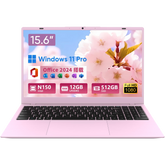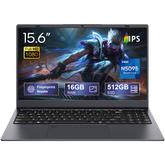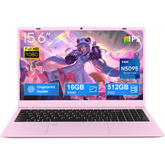BiTECOOL 14-inch Windows 11 Pro compatible laptop
01 Aug 2024
0 Comments
# ノートパソコンを最適化するための5つの簡単なステップ
Whether you just bought a laptop or already own one, you're probably wondering how to best maximize its performance. This article will show you 5 easy steps to improve your laptop's performance, from adjusting settings to battery management, storage management, security measures, and software updates.

## 1. Optimizing your settings
First, optimize your laptop settings, which can greatly improve your everyday experience.
### 1.1 Adjusting your display settings
Your display settings have a big impact on your visual comfort and battery life.
1. **Brightness and contrast optimization**:
- In the settings menu, go to "System" → "Display" and adjust the brightness and contrast.
2. **Using the Blue Light Filter**:
- Reduce eye strain by enabling the "Night Light" feature.
This will reduce eye strain and improve your work efficiency. Next, review your power settings.
### 1.2 Optimize your power settings
Your power settings directly affect performance and battery life.
1. **High performance mode settings**:
- From the settings menu, go to "System" -> "Power & Sleep" -> "Additional power settings" and select "High performance".
2. **How to use Battery Saver Mode**:
- Reduce power consumption by enabling "Battery Saver" when your battery is low.
This will improve your laptop's performance and battery life. Next, check your keyboard and touchpad settings.
### 1.3 Keyboard and touchpad settings
Optimize your keyboard and touchpad settings to work more efficiently.
1. **Customize shortcut keys**:
- Go to the settings menu, then Devices, then Keyboard, and customize your shortcut keys.
2. **Adjusting touchpad sensitivity**:
- Similarly, go to "Devices" → "Touchpad" and adjust the sensitivity.
Now that you have a comfortable operation, let's look at how to improve battery life.
## 2. How to improve battery life
There are some simple steps you can take to extend your battery life.
### 2.1 Close unnecessary apps
By closing unnecessary apps running in the background, you can reduce battery consumption.
1. **Start Task Manager**:
- Press Ctrl + Shift + Esc to open Task Manager.
2. **Closing unnecessary apps**:
- From the Processes tab, right-click on the unwanted app and select End task.
This will reduce battery drain. Next, we'll look at some habits that will improve your battery life.
### 2.2 Habits to extend battery life
Proper charging cycles and calibration are important to extend the life of your battery.
1. **Proper Charge Cycle Management**:
- Try to keep your battery between 20% and 80%.
2. **Battery Calibration**:
- Once a month, fully discharge and recharge the battery.
This will extend the battery life and allow you to use it for a long time. Next, let's look at storage management.
## 3. Storage Management
Managing storage is very important to improve your laptop's performance.
### 3.1 Delete unnecessary files and apps
Free up storage space by deleting unnecessary files and apps.
1. **Run Disk Cleanup**:
- Search for "Disk Cleanup" from the Start menu and run it.
2. **Using the Uninstall Tool**:
- Go to the settings menu, then "Apps" -> "Apps and features" and uninstall any unnecessary apps.
Now that you have freed up storage space and improved performance, let's take a look at how you can take advantage of cloud storage.
### 3.2 Utilizing Cloud Storage
By utilizing cloud storage, you can efficiently manage large files.
1. **How to use OneDrive or Google Drive**:
- Create a OneDrive or Google Drive account and upload your files.
2. **Check your sync settings**:
- Check your sync settings to ensure automatic backups.
Now that your important data is safe, let's look at how to use external storage.
### 3.3 Using External Storage
External storage allows you to manage even more data.
1. **Using a USB memory stick or external HDD**:
- Connect to a USB port and transfer data.
2. **Regular backups**:
- Regularly back up your data and store it safely.
Now that data management has become more efficient, let's look at security measures.
## 4. Security measures
Security measures are essential to keep your laptop safe.
### 4.1 Installing antivirus software
Installing antivirus software will protect your laptop from malware.
1. **Selecting a recommended antivirus software**:
- Install Windows Defender or another trustworthy program.
2. **Perform regular scans**:
- Run virus scans regularly.
Now that your laptop is safe to use, let's look at configuring your firewall.
### 4.2 Firewall configuration
Setting up a firewall will help prevent external attacks.
1. **Enable and configure Windows Firewall**:
- From the settings menu, go to "Update & Security" → "Windows Security" → "Firewall and network protection" and enable it.
Now that we have prevented external attacks, let's look at password management.
### 4.3 Password Management
Protect your personal information by creating and managing strong passwords.
1. **Create a strong password**:
- Create a password that includes uppercase letters, lowercase letters, numbers and special characters.
2. **Use a password manager**:
- Use tools like LastPass or 1Password to keep it safe.
Now that your personal information is safe and secure, let's look at software updates.

## 5. Software Updates
Using the latest software improves the performance and security of your laptop.
### 5.1 OS Update
Run Windows Update to install the latest OS.
1. **How to run Windows Update**:
- From the Settings menu, go to "Update & Security" → "Windows Update" and select "Check for updates."
Now that you have the latest features and security patches, let's look at updating your drivers.
### 5.2 Driver Update
Keeping your drivers up to date ensures that your hardware is performing to the best of its ability.
1. **Updating drivers from Device Manager**:
- Open Device Manager, right-click on each device driver and select "Update Driver".
Now that your hardware is running optimally, it's time to look at updating your apps.
### 5.3 Updating the App
Keeping your app up to date will give you access to new features and security improvements.
1. **Automatic and manual update settings**:
- Enable automatic updates in the Microsoft Store and within each app.
Now you can take advantage of the latest features. Finally, a summary and call to action.
## summary
To get the most out of your laptop, it's important to optimize settings, manage battery and storage, and keep your security and software up to date.
### Product introduction and call to action
If you're looking for a new laptop, the "[Intel Celeron BiTECOOL 14-inch Windows 11 Pro Laptop](https://www.amazon.co.jp/dp/B0CY2D57SB?ref=myi_title_dp)" is the perfect choice. This thin PC is not only lightweight and easy to carry, but also offers powerful performance and a large capacity battery. The 14-inch full HD display is perfect for work and entertainment. Get this mobile PC now and start your comfortable laptop life!
## FAQ
### Is there any way to improve the performance of my laptop?
Here are some ways to improve your laptop's performance:
- Clean up your disk
- Stop programs from starting automatically
- Delete temporary files
- Install SSD
- Add an external drive
- Add more memory
- HDD optimization (defragmentation)
- Remove dust
### How do I optimize my laptop?
Here's how to manually optimize it:
- Click "Start," "Windows System," and then "Control Panel."
- Select "System and Security"
- Select "Defragment and optimize drives"
- Select the drive and click "Optimize"
- Defragmentation is complete when "OK" is displayed.
### What is PC performance?
Performance refers to the capabilities of a computer, and is evaluated based on processing speed, etc. Important aspects include CPU processing power, memory read/write speed, graphics performance, and hard disk transfer speed.











Leave a comment
Please note, comments need to be approved before they are published.